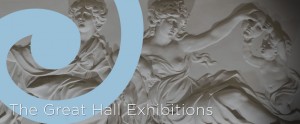 The Great Hall Exhibitions Events: Fall 2015
The Great Hall Exhibitions Events: Fall 2015
Step Into Liquid: Art and Art History in the Post-Fordist Era
Friday, December 4, 2015
1:00pm to 6:00pm in the Lecture Hall
The Institute of Fine Arts, NYU
1 East 78th Street
Organized by Walead Beshty, with Rachel Heidenry ’11 and Eloise Maxwell
Introduction: Remarks by Walead Beshty, 1:00-1:15pm
Panel 1: Digitalization and the Aesthetics of Distribution, 1:15-3:00pm
It is commonly observed that a core tenet of Contemporary Art is its being produced with an awareness of its dependence on systems of distribution, a condition that has increasingly come to dominate the approach of the most ambitious criticism of our time. How has the development of a vast digital infrastructure, which facilitates contemporary aesthetic distribution, produced pronounced effects on the form and materiality of the work of art and its reception? How does this vast distributive system interact with and complicate the aesthetic conditions of industrialized production and distribution that it operates in tandem with? How does this awareness manifest itself despite the fact that the majority of contemporary artistic practices continue to maintain traditional genres such as painting, sculpture, photography, film and video or performance, albeit under distinctly different conditions from their predecessors?
Break: 3:00-3:30pm
Panel 2: Performativity and Methodology, 3:30-4:45pm
As the boundaries between the art object and its mode of circulation become increasingly difficult to maintain, whether it be through its dispersal among bodies in socially contingent practices or through means of distribution that are habitually seen as secondary to the work itself, what methodological tools are available to art history and art criticism to address the current status of the work of art? What methodological questions does it pose to theories of representation, or to the method of comparative formal analysis that underscores the field? Which, if any, of the classical art historical distinctions—be they between media, or aesthetic forms, or primary and secondary manifestations of the work of art—can be maintained? In short, can art history and criticism address what things “do” in addition to what they “say”?
Conclusion: 4:45pm-5:15pm
Reception: 5:15-6:00pm
Panel 1:
Moderator – Tim Griffin, The Kitchen
Speakers:
Claire Bishop, CUNY Graduate Center
Kenneth Goldsmith, University of Pennsylvania
Ruba Katrib, The Sculpture Center
Bettina Funcke, School of Visual Arts
Panel 2:
Moderator – Janet Kraynak, Columbia University
Speakers:
Alexander Alberro, Columbia University
Robert Slifkin, Institute of Fine Arts
Alex Kitnick, Bard College
Christopher Wood, New York University